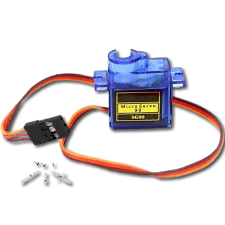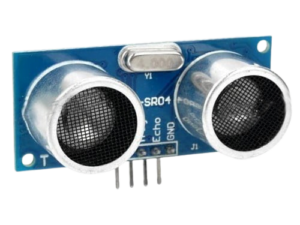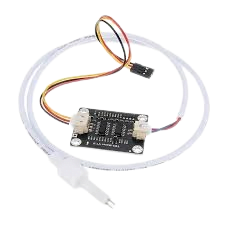No products in the cart.
Robot Projects
Obstacle Avoidance Robot Car using Arduino UNO – Red
Availability:
1 in stock
An Obstacle Avoidance Robot Car using Arduino UNO is an autonomous vehicle that detects and avoids obstacles using an ultrasonic sensor. Controlled by an Arduino UNO and driven by an L293D motor driver, the robot changes direction upon sensing an obstacle, making it ideal for learning robotics and programming basics.
₹4,720.00 ₹6,490.00 (Incl. GST)
1 in stock
Obstacle Avoidance Robot Car Using Ultrasonic Sensor, Servo Motor, and Arduino UNO – Red
Introduction
The Obstacle Avoidance Robot Car is a fascinating project that demonstrates the fundamentals of robotics and autonomous navigation. Designed to detect and avoid obstacles in its path, this robot car is ideal for enthusiasts, students, and educators interested in exploring the world of robotics. Powered by an Arduino UNO, an ultrasonic sensor, and a servo motor, the robot car can navigate through complex environments without human intervention, making it a perfect project for learning and experimentation.
Key Components
1. Arduino UNO: The Arduino UNO serves as the central processing unit of the robot car. It receives data from the ultrasonic sensor and uses this information to control the servo motor, directing the car’s movement. The Arduino UNO’s simplicity and versatility make it an excellent choice for this project, allowing for easy programming and modification.
2. Ultrasonic Sensor: The ultrasonic sensor is the robot’s “eyes,” responsible for detecting obstacles in its path. It emits ultrasonic waves and measures the time taken for the waves to bounce back after hitting an object. This data is then sent to the Arduino, which calculates the distance to the obstacle and determines the best course of action.
3. Servo Motor: The servo motor controls the steering mechanism of the robot car. Based on the distance data provided by the ultrasonic sensor, the Arduino instructs the servo motor to adjust the car’s direction, ensuring it avoids obstacles and continues moving safely.
How It Works
The Obstacle Avoidance Robot Car continuously scans its surroundings using the ultrasonic sensor. When it detects an obstacle within a predefined range, the Arduino processes the data and sends commands to the servo motor to change the car’s direction. The robot car then maneuvers around the obstacle, avoiding collisions and continuing on its path. This process is repeated continuously, allowing the robot to navigate through various environments autonomously.
Applications
This project is not only a great learning tool but also has practical applications in areas like automated delivery systems, warehouse robots, and even as a basis for more complex autonomous vehicles. The principles learned from building and programming this robot car can be applied to a wide range of robotic applications.
Conclusion
The Obstacle Avoidance Robot Car is an engaging and educational project that introduces key concepts in robotics, such as sensor integration, motor control, and autonomous navigation. With its straightforward design and functionality, this project is an excellent stepping stone into the exciting world of robotics and automation.
| Weight | 0.00 kg |
|---|---|
| Dimensions | 0.00 × 0.00 × 0.00 cm |
Based on 0 reviews
Be the first to review “Obstacle Avoidance Robot Car using Arduino UNO – Red”
You may also like…
- Electrical Projects (BTech MTech)
Bluetooth Based Home Automation System
The Bluetooth-Based Home Automation System is an innovative solution that enables users to control electrical appliances using a smartphone via Bluetooth communication. This system provides a cost-effective and efficient way to automate home appliances such as lights, fans, air conditioners, and other electrical devices without requiring internet connectivity.
SKU: home-automation-system








There are no reviews yet.